American Journal of Computational Mathematics
Vol.2 No.2(2012), Article ID:20124,6 pages DOI:10.4236/ajcm.2012.22018
Power Tensor Theory and Continuous Wavelet Transform
Department of Electrical, Electronic and Computer Engineering, National University of Colombia, Manizales, Colombia
Email: eacanopl@unal.edu.co
Received March 25, 2012; revised April 18, 2012; accepted April 25, 2012
Keywords: Wavelets; Tensor; Electrical Power; Power Electronic; Power Quality
ABSTRACT
A model for the definition of electrical Power is presented, which retrieves the concepts of homomorphism from the geometrical tensor approximation at the wavelet approach. Their definition here is nevertheless different in that it considers both tensor algebra and wavelet operators, solving thus most of the problems usually associated with the numerical methods.
1. Introduction
Traditionally, the development of pattern recognition is known as “power quality” in power systems from electrical engineering point of view. In this way many works has been published in the last decades [1-7]. In the major approaches isfocalized to see how the perturbation affect the normal operation of the power systems. In power distribution networks, particular aspects as the feeder has been directed in order to the optimal power transfer. It is necessary proposed a new definition and methodology for solver the problem of the optimal power transfer. This work is fundamental supporting in the aspect to see a new power definition from an analytical point of view.
Algebra, functional analyses and geometry are the building blocks for the construction of the language engineers currently want to use [7-10]. The basic principles on which this proposed theory is developed are founded on these three pillars. The postulates are:1) Electromagnetic energy, intended as intermediary, is continuous in systems of rational energy usage.
2) Two elements, v and i are defined in the system. These elements comply with the terms of a vector space, with inner product and norm induced by this product, and the space H (Hilbert space) generated by those components is complete. In other words, any Cauchy sequence in H, converges to an element in H.
3) There are orthonormal sets in these Hilbert spaces, which form bases andcreate space. Additionally, the Fourier analysis can be applied.
Hypothesis 1:
The implementation of this system under a new algebraic structure will keep the previous assumptions in the combination v and i, because of the principle of energy conservation. The algebraic structure to be used is the dyadic or tensor product introduced in [11] and [12].
Hypothesis 2:
The operator to be applied will have a homomorphous behavior. The properties of the generated space
 continue to be of Hilberian space.
continue to be of Hilberian space.
The conditions of these hypotheses must be framed within the analysis of matrix functions in several variables.
2. Evaluation of the First Hypothesis
2.1. Instantaneous Power Tensor Theory
The proposed method is based on the definition of an evolutionary expression of instantaneous power, called “instantaneous power tensor” [13], in order to geometrically interpret the dynamic behavior of electromagnetic phenomena, analogous to studies of deformation in the mechanics of solids. Therefore, the goal proposed is to obtain a single expression containing the two components of the instantaneous power (active and reactive). Therefore, using the dyadic or tensor product the proposed expression is as follows:
 (1)
(1)
where Ãij is the instantaneous power tensor and subscript t refers to the vector transpose. On the other hand, a multiphase electrical network was defined as one n-phase and m-wire power system related to the dimension of vector space, where voltage vector and current vector were defined assuming that, R1 is the single-phase system, R2 is the two-phase system with two-wire or three-wire, R3 is the three-phase system with three-wire or four-wire and Rn is the multiphase system with n-phase and mwire.
Therefore, in a system of n-phase and m-wire, where the instantaneous vectors of voltage and current are expressed as:
 (2)
(2)
Then, the instantaneous power tensor in Rn is equal to:
 (3)
(3)
Moreover, in a system of three-phase and three-wire or four-wire, where the phases are identified by a-b-c, the instantaneous power tensor in R3 is expressed as:
 (4)
(4)
when n = 1, it is the case of a single phase system, and the instantaneous values of voltage and current are scalars. Therefore, according to the traditional concept of instantaneous power in single phase systems the instanttaneous power tensor in R1 is equal to:
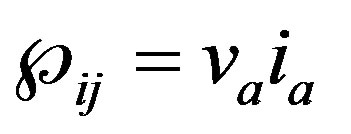 (5)
(5)
2.2. Orthogonal Decomposition of the Current Vector
According to (1):
 (6)
(6)
This expression implies that the current vector can be obtained from the definition of instantaneous power tensor as follows:
 (7)
(7)
such that,  denotes the Euclidean norm. Replacing (6) in (7) the current vector can be expressed by,
denotes the Euclidean norm. Replacing (6) in (7) the current vector can be expressed by,
 (8)
(8)
where,  is the instantaneous active current vector:
is the instantaneous active current vector:
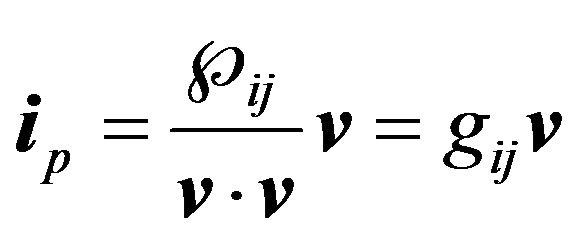 (9)
(9)
and  is the instantaneous reactive current vector:
is the instantaneous reactive current vector:
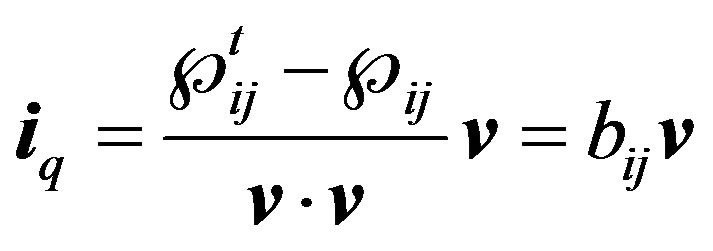 (10)
(10)
In (9) gij is the instantaneous conductance tensor:
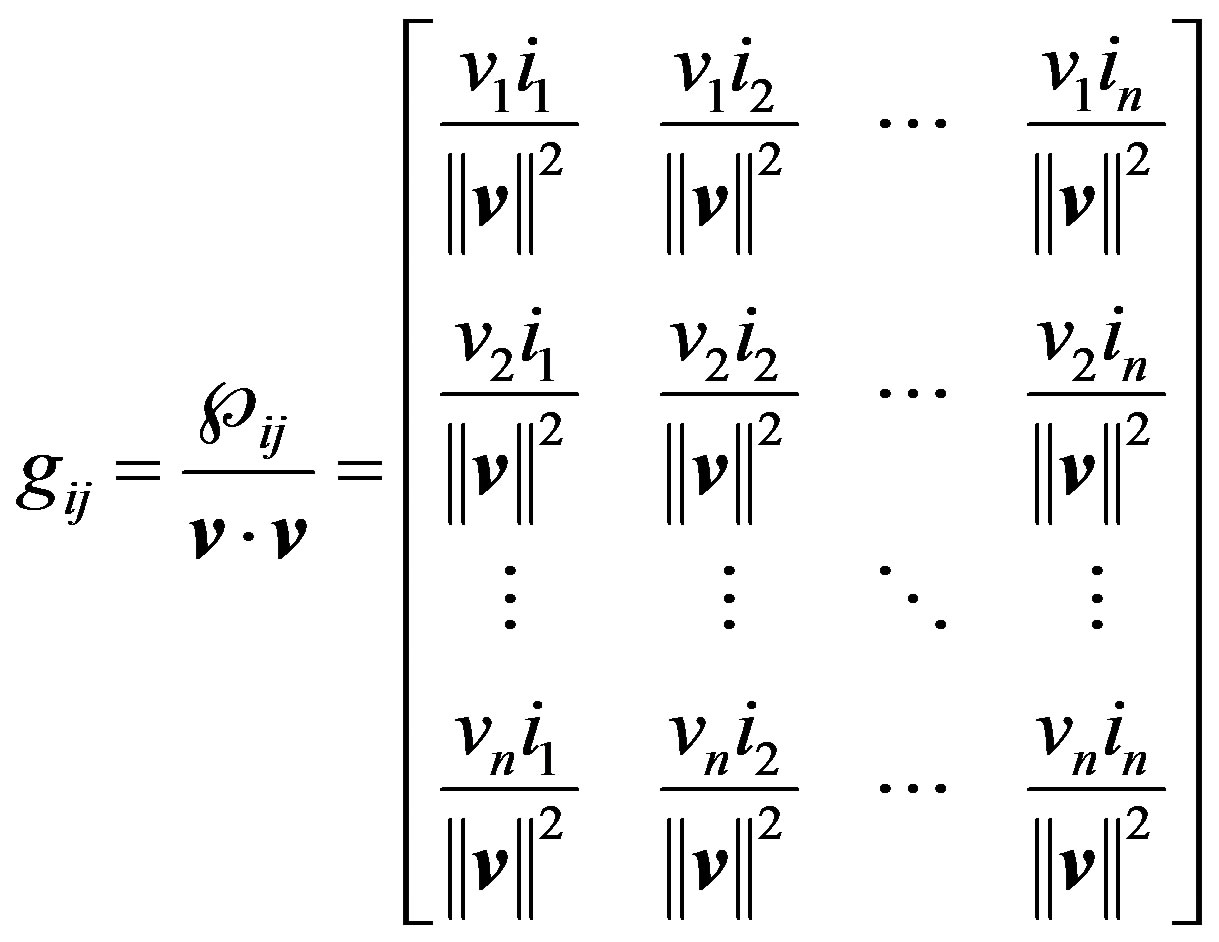 (11)
(11)
and in (10) bij is the instantaneous susceptance tensor:
 (12)
(12)
Moreover, the decomposition of the instantaneous current vector is characterized by:
 (13)
(13)
such that,
 (14)
(14)
2.3. Orthogonal Decomposition of the Power Tensor
The decomposition of the instantaneous power tensor is obtained by applying the tensor product of the voltage vector on (8), thus:
 (15)
(15)
Here the first term is the instantaneous active power tensor:
 (16)
(16)
and the second term is the instantaneous reactive power tensor:
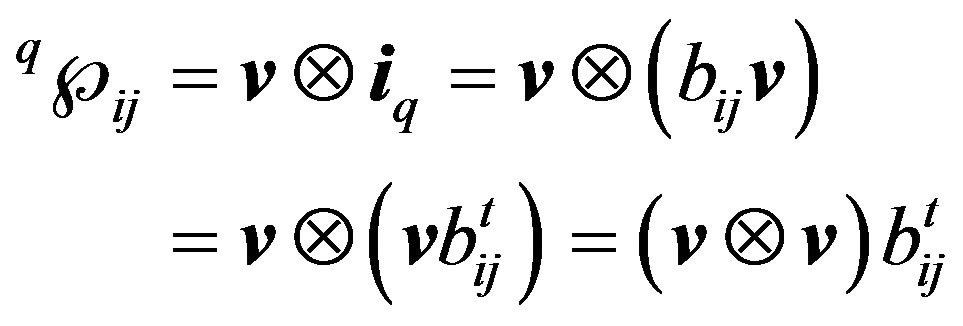 (17)
(17)
Consequently,
 (18)
(18)
Moreover, (18) satisfies the orthogonality concept, in other words,
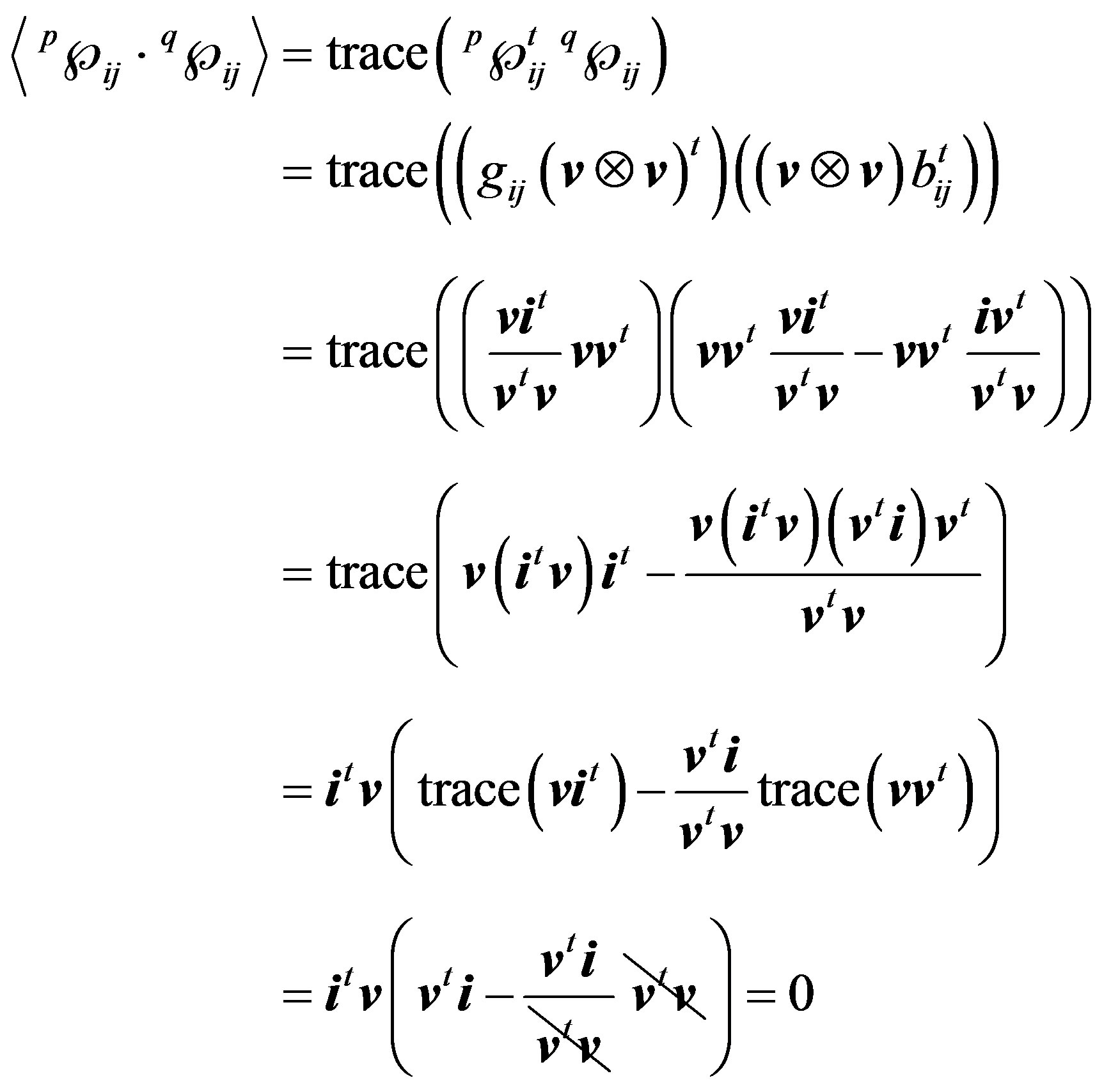 (19)
(19)
Therefore, it holds that:
 (20)
(20)
Such that,  denotes the norm of the system. In other words, the space generated by the operation is a normed space with norm induced by the inner product, thus the first hypothesis is proved.
denotes the norm of the system. In other words, the space generated by the operation is a normed space with norm induced by the inner product, thus the first hypothesis is proved.
3. Evaluation of the Second Hypothesis
Continuous Wavelet Transform in Several Variables
In [14] shows an intuitive approach to the continuous wavelet transform in several variables. The general formulations are shown below.
Considering a family of matrix functions obtained by scale changes and translations of a wave matrix called “mother wave” formed by a set of systems of one-dimensional wavelets: ,
,
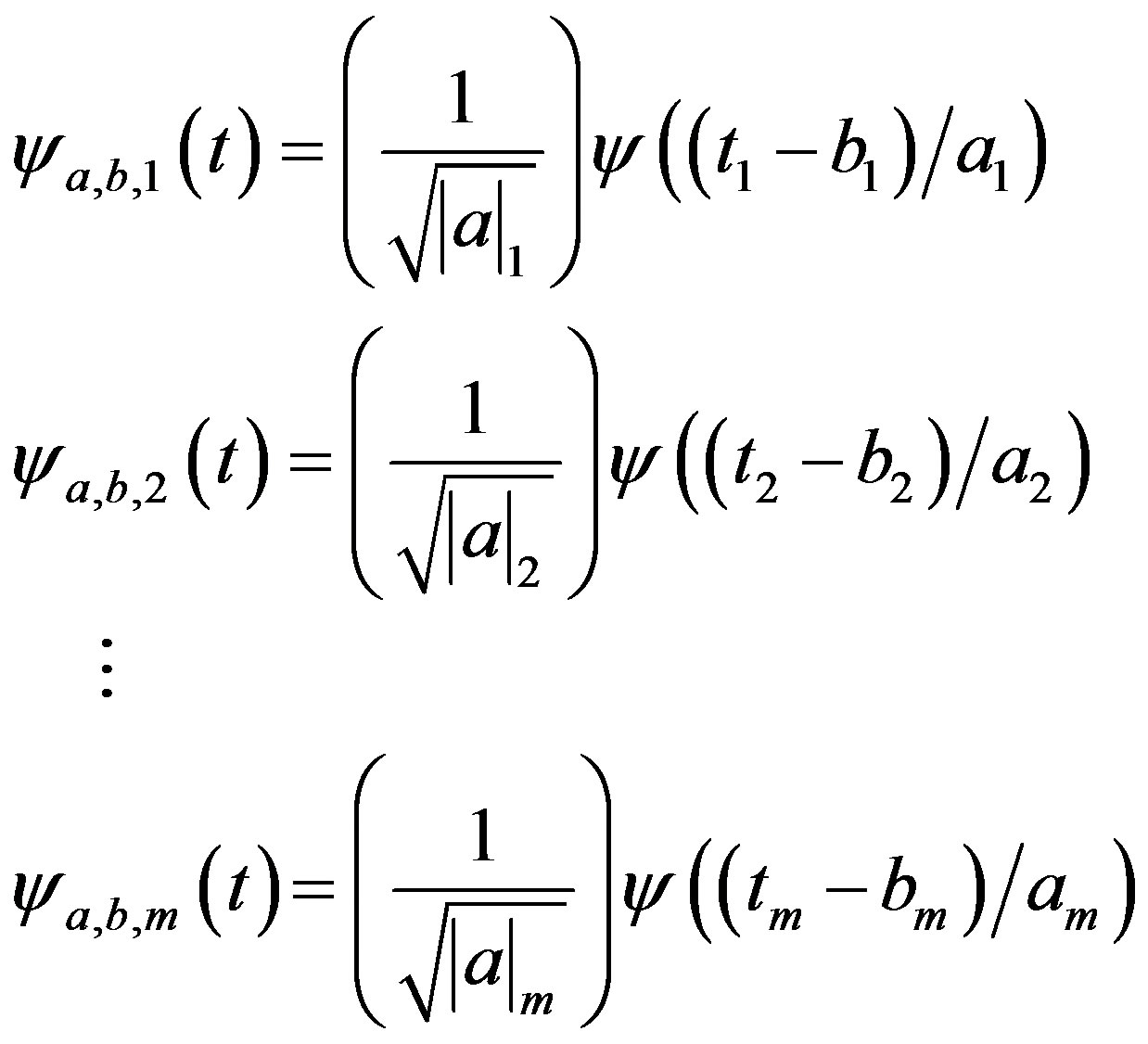 (21)
(21)
where: . For normalization:
. For normalization:
 (22)
(22)
where m is the dimension of body . It is assumed that the one-dimensional function satisfies the admissibility condition if:
. It is assumed that the one-dimensional function satisfies the admissibility condition if:
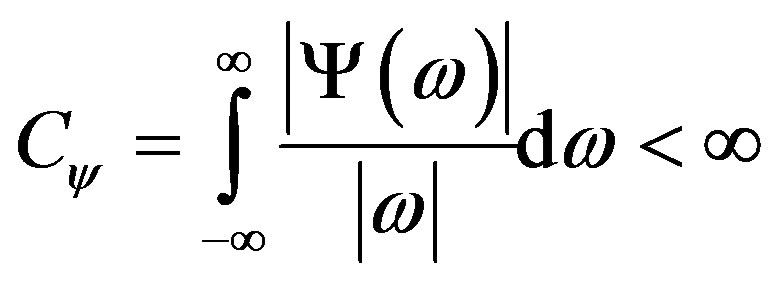 (23)
(23)
where  is the Fourier transform of
is the Fourier transform of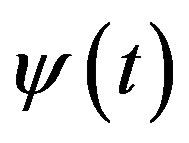 .
.
In practice, the wave represented in the frequency frame falls so fast that the admissibility condition is reduced to 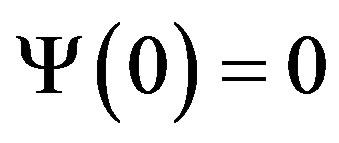 or
or . Therefore, To normalize the wavelet so its energy turns unitary implies {XE “eneenergía”}
. Therefore, To normalize the wavelet so its energy turns unitary implies {XE “eneenergía”}
 (24)
(24)
Thus, an additional result will be:
 (25)
(25)
In other words the admissibility condition will have a structure.
Definition 1:
Since  an operator of a Hilbert space, it can be said that
an operator of a Hilbert space, it can be said that 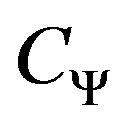 complies with the following properties:
complies with the following properties:
1) Hermitian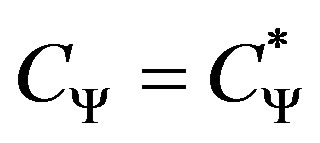 .
.
2) Unitary .
.
3) Positive definite.
4) Invertible.
Definition 2:
The continuous wavelet transform of a function in several variables,  (where
(where  is the space of square integrable functions) is defined as:
is the space of square integrable functions) is defined as:
 (26)
(26)
And the question that arises is: is the wavelet operator isomorphic? Following it will be shown how this is possible.
Proposition 1:
Given the continuous wavelet transform
 of a function
of a function  the function
the function 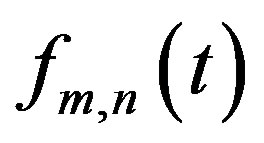 might be reconstructed by:
might be reconstructed by:
 (27)
(27)
Given the space of functions and the measurement in question, this integration is interpreted as Lebesgue.
Proof:
To simplify the proof was assumed that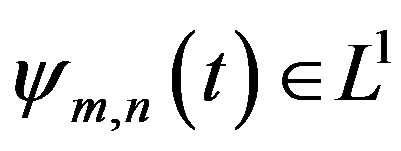 ,
,  just as
just as 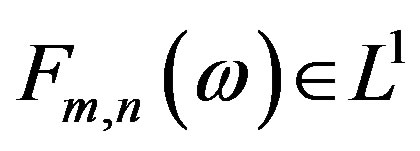 (or
(or 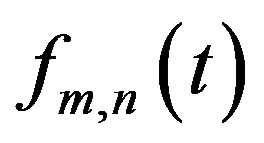 continues). First
continues). First  is expressed in terms of Fourier transform of the wavelet and the signal.
is expressed in terms of Fourier transform of the wavelet and the signal.
Note that the Fourier transform of  is:
is:
 (28)
(28)
This is the wavelet element m, n of the wavelet matrix operator. According to Parseval equality:
 (29)
(29)
Note that the integral in (29) is proportional to the inverse Fourier transform of  in each of the components of the matrix and it is a function of b. The above mentioned operation is valid, once the system is understood as an operator that keeps it in the same space.
in each of the components of the matrix and it is a function of b. The above mentioned operation is valid, once the system is understood as an operator that keeps it in the same space.
Be the element m,n of the matrix J:
 (30)
(30)
replacing (29) in (30):
 (31)
(31)
Applying Fubini’s theorem to each component of the matrix J [15]:
 (32)
(32)
Substituting for each component of the matrix 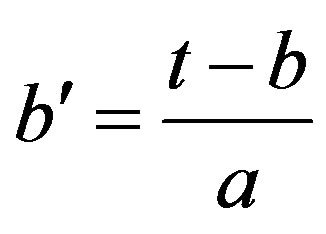 in the second integral, gives:
in the second integral, gives:
 (33)
(33)
And replacing this result in (32), gives:
 (34)
(34)
Evaluating (29) regarding variable a:
 (35)
(35)
Given the restrictions imposed on 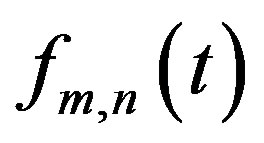 y
y 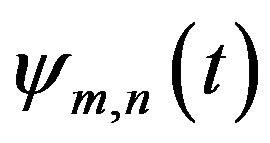 the order of integration can be changed by applying Fubini’s theorem and making the change of variable
the order of integration can be changed by applying Fubini’s theorem and making the change of variable  gives:
gives:
 (36)
(36)
This element m,n of the matrix Cψ must meet definition 1. This integral is independent of , therefore, it can be summarized as:
, therefore, it can be summarized as:
 (37)
(37)
The operator is isomorphic with the condition of admissibility. It might be said that the wavelet transform has the properties of linearity, displacement and scale variance. Following, emphasis will be placed on the property of energy conservation.
Proposition 2:
Given  and its wavelet transform
and its wavelet transform  {XE “transformada ondita: teorema de conservación de la energía”} {XE “transformada ondita: multiresolucion”} {XE “transformada ondita: función de dos escalas”} {XE “transformada ondita: criterio para selección de onditas”}, the following equality is verified:
{XE “transformada ondita: teorema de conservación de la energía”} {XE “transformada ondita: multiresolucion”} {XE “transformada ondita: función de dos escalas”} {XE “transformada ondita: criterio para selección de onditas”}, the following equality is verified:
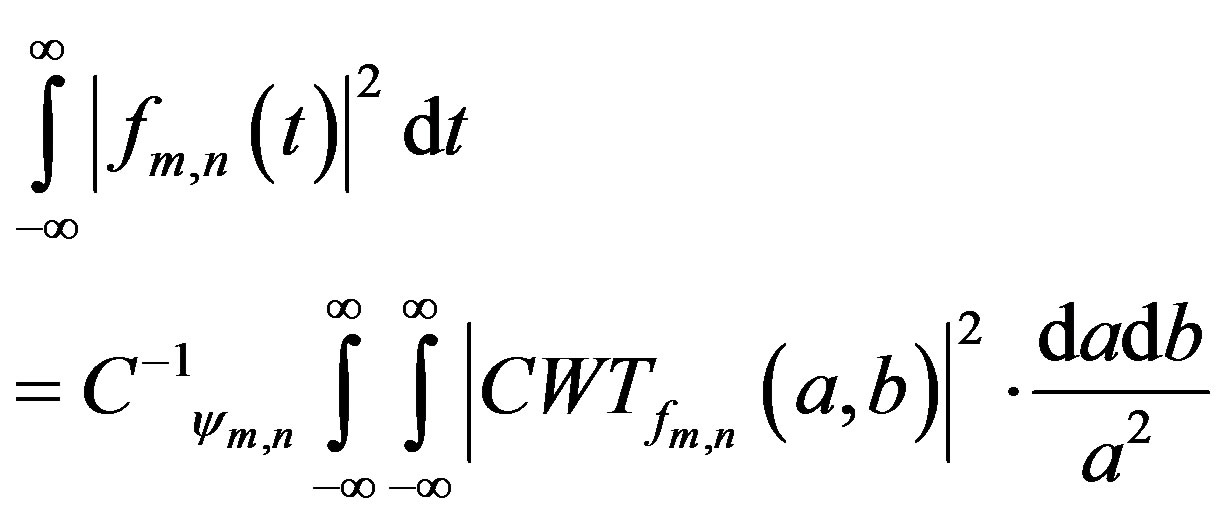 (38)
(38)
Proof [1]:
From the expression,
 (39)
(39)
Making the change of function:
 (40)
(40)
The previous equality might be written as:
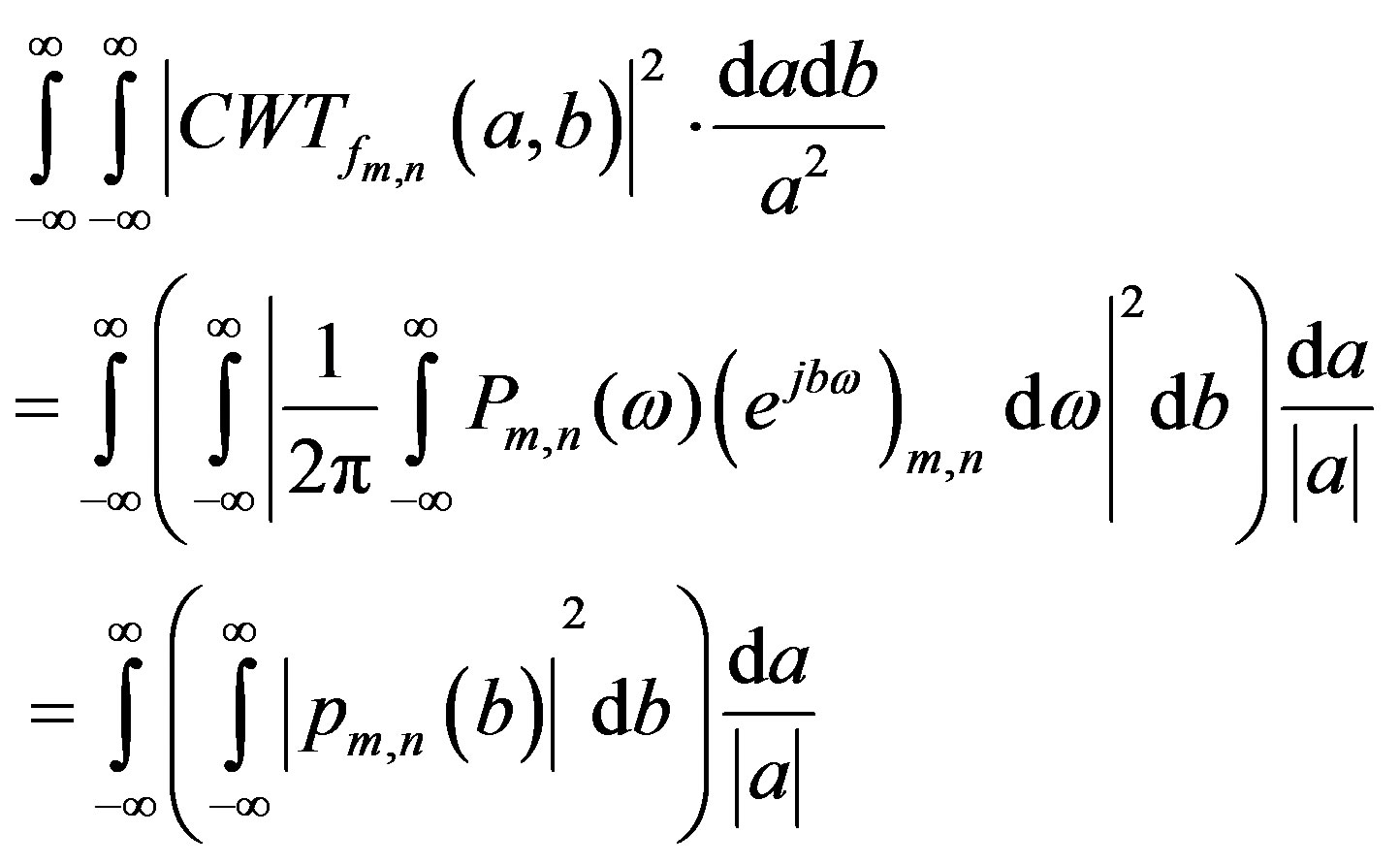 (41)
(41)
Applying Parseval’s identity:

 (42)
(42)
And replacing (40) in (42), gives:
 (43)
(43)
NOTE: The change of the integration is done by Fubini’s and the second integral on the right side is call matrix of admissibility.
Applying once again the Parseval’s equality:
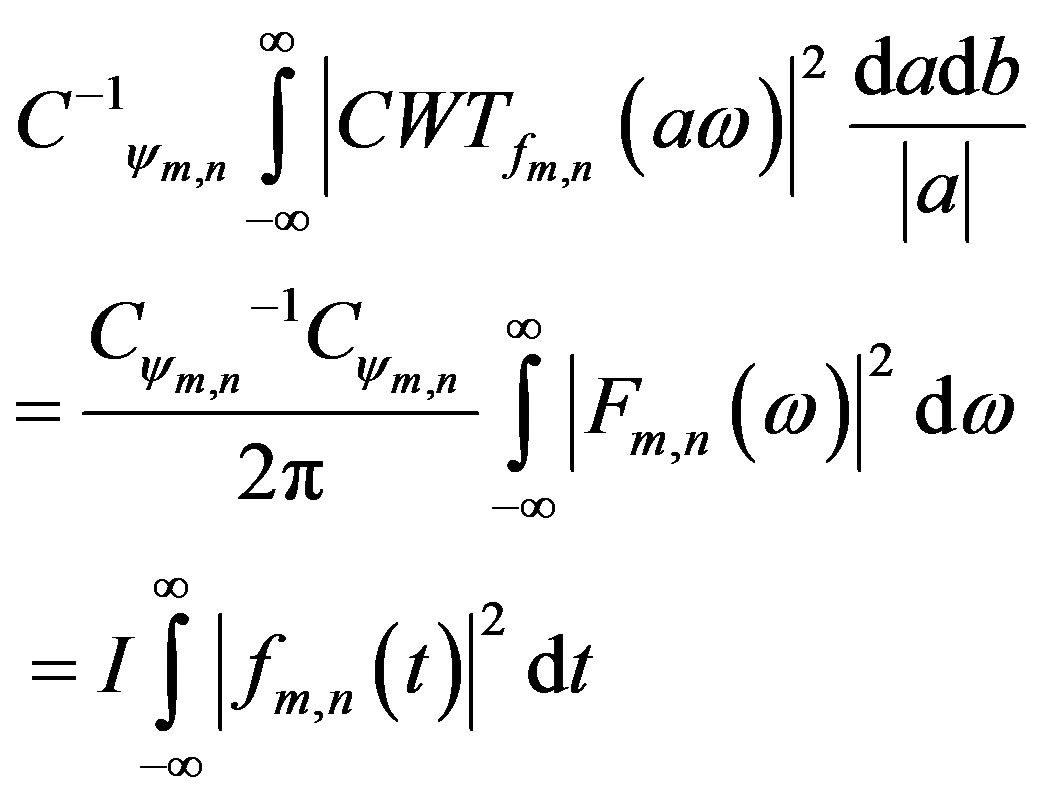 (44)
(44)
This is the admissibility condition to be proved, namely the existence of transformable function matrices and with no change of energy. Therefore, it can be deduced that:
 (45)
(45)
In other words, the wavelet transform shows homomorphism in the presence of the tensor product provided that the conditions of the admissibility matrix are met, and that these conditions are framed within the characteristics in definition 1.
4. Conclusion
Conceptual clarity is essential in the development of a theory that values the characteristics of a system, in particular pattern recognition (Power Quality in electrical systems).Thistheory is based on matrix analyses and functional analyses using algebraic structures, which is a very important ingredient. The aim of this paper is to interpret in light of Engineering, a foundation to evaluate the Instantaneous Power Theory, through the wavelet operator, under the dyadic product structure. This method open the door for obtained a possible way from the analysis of the optimal power systems transfer.
REFERENCES
- E. Cano Plata, H. E. Tacca and C. E. D’Attellis, “Load Detection and Classification Using Wavelets and Instantaneous Power Signal,” Proceedings of International Conference in Power Quality, Perth, 4-7 October 2000, pp. 761-774.
- IEEE Task Force on Harmonics Modeling and Simulation, “Modeling and Simulation of the Propagation of Harmonics in Electric Power Networks, Part I, Concepts, models, and simulation techniques,” IEEE Transactions on Power Delivery, Vol. 11, No. 1, 1996, pp. 452-465. doi:10.1109/61.484130
- IEEE Task Force on Harmonics Modeling and Simulation, “Modeling and Simulation of the Propagation of Harmonics in Electric Power Networks, Part II, Sample systems and examples,” IEEE Transactions on Power Delivery, Vol. 11, No. 1, 1996, pp. 466-474. doi:10.1109/61.484131
- IEEE Task Force on Harmonics Modeling and Simulation, “Modeling and Simulation of Power System Harmonics, Chapter 11,” IEEE press, Piscataway, 1998.
- W. H. Kersting, “Radial Distribution Test Feeders,” IEEE Transaction on Power Systems, Vol. 6, No. 3, 1991, pp. 975-985. doi:10.1109/59.119237
- Alberta University. http://www.ee.ualberta.ca/pwrsys/IEEE
- I. Daubechies, “Ten Lectures on Wavelets,” Society for Industrial and Applied Mathematics, Philadelphia, 1992.
- M. Vetterli and J. Kovacevic, “Wavelets and Subband coding,” Prentice Hall, Upper Saddle River, 1995.
- G. Strang and T. Nguyen, “Wavelets and Filter Banks,” Wellesley-Cambridge Press, Wellesley Hills, 1996.
- C. E. D’Attellis, M. T. Anaya, M. I. Cavallaro and F. F. Villaverde, “Introducción a las Onditas—Una presentación para curso de grado de Ingeniería con Matlab,” Editorial Nueva Librería, Buenos Aires, 1995.
- X. Dai, G. Liu and R. Gretsch, “Generalized theory of Instantaneous Reactive Quantity for Multi-Phase Power System,” IEEE Transaction on Power Delivery, Vol. 19, No. 3, 2004, pp. 965-972. doi:10.1109/TPWRD.2004.829914
- P. Salmerón and R. S. Herrera, “Instantaneous reactive Power Theory—A General Approach to Poly-Phase Systems,” Electric Power Systems Research, Vol. 79, No. 9, 2009, pp. 1263-1270. doi:10.1016/j.epsr.2009.03.007
- A. J. Ustariz, E. A. Cano and H. E. Tacca, “Tensor analysis of the Instantaneous Power in Electrical Networks,” Electric Power Systems Research, Vol. 80, No. 7, 2010. doi:10.1016/j.epsr.2009.12.004
- E. A. C. Plata and H. E. Tacca, “Three Phase Power Using Wavelet Multiresolution Analysis. Part I: Mathematical background,” IEEE of Latin America Transaction, vol. 1, no. 1, 2003, pp. 15-20. doi:10.1109/TLA.2003.1468614
- W. Rudin, “Functional Analysis,” 2nd Edition, McgrawHill, New York, 1973.

